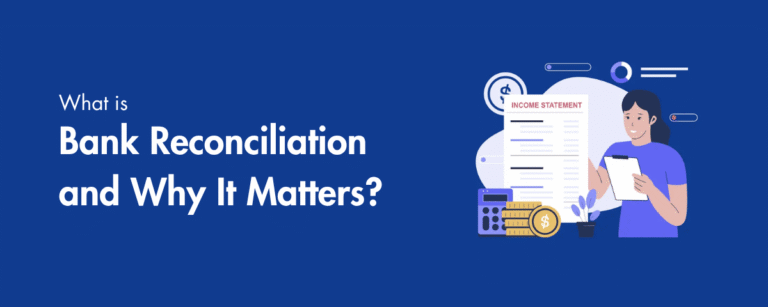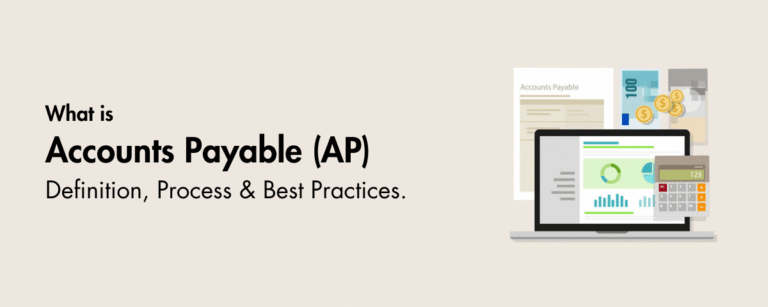Accrual accounting shows what you actually earned and what you truly owe, even if cash has not moved yet. You recognize revenue when you deliver value and you record expenses when you incur them, then you line them up in the same period so performance is clear.
Table of Contents
- Key Takeaways
- Accrual Accounting, In Plain English
- How Accrual Accounting Works Day To Day
- Receivables, Payables, And Deferrals That Make Accruals Work
- Types of Accruals You Will Use
- Accrual Accounting vs Cash Accounting
- Who Must Use Accrual Accounting, and When
- Practical Close Tips That Keep Accruals Clean
- Benefits and Drawbacks
- Accrual Journal Entries and Examples
- Choosing an Accounting Method
- The Bottom Line
- Frequently Asked Questions
Key Takeaways
- Accrual accounting records revenue when earned and expenses when incurred, not when cash changes hands. This is the IRS’s plain definition of the accrual method for tax, and it is the same idea you use for management reporting.
- Public companies in the U.S. must prepare financials under GAAP, and GAAP uses accrual accounting. Global filers under IFRS also prepare financials on the accrual basis. (sec.gov)
- Revenue is recognized when you satisfy performance obligations, using the five‑step model from ASC 606 or IFRS 15.
- For U.S. tax in 2025, many smaller businesses can still use cash method rules, but the inflation‑adjusted gross receipts threshold is now 31,000,000. Larger taxpayers often must use accrual for tax or at least for sales and purchases tied to inventory. (irs.gov)
- Accruals add discipline and clarity, but they require good controls, schedules for AR, AP, prepaids, and deferred revenue, and a consistent close process.
Accrual accounting tells the real story of performance, you earned it, you record it, regardless of when the cash hits the bank.
Accrual Accounting, In Plain English
Accrual accounting means you record income in the period you earn it and you record expenses in the period you incur them. You do this even if you have not sent the invoice yet or you have not paid the bill. The goal is simple, show a faithful picture of profit for that period. For tax, the IRS says the purpose of an accrual method is to match income and expenses in the correct year. (irs.gov)
Recognize Revenue When It Is Earned
Under modern standards, you book revenue when you transfer control of goods or services to your customer, not when cash arrives. You apply a five‑step model, identify the contract, identify performance obligations, determine the transaction price, allocate the price to obligations, and recognize revenue as obligations are satisfied. If you deliver a service on October 30, that revenue belongs in October, even if the customer pays in November. (ifrs.org)
Practical tip
- Credit sale, debit Accounts Receivable, credit Revenue.
- When the customer pays, debit Cash, credit Accounts Receivable.
- For long projects, recognize revenue over time as you complete the work, for example using milestones or cost‑to‑complete when appropriate.
Match Costs To The Revenue They Support
The matching principle is the heartbeat of accrual accounting. If you recognized October revenue for a job, the materials, labor, and subcontractor costs that produced that revenue should land in October too. If the bill surfaces in November, you accrue the expense in October, then reverse it when you post the vendor invoice. This keeps your gross margin honest.
How Accrual Accounting Works Day To Day
Think of accrual accounting as three buckets you manage every close.
- Timing bucket, earned or incurred this period but cash later, use Accounts Receivable and accrued expenses.
- Prepayment bucket, cash now but benefit later, use prepaids and amortize.
- Deferral bucket, cash from customers now but you still owe service, use deferred revenue and recognize each period as you deliver.
Revenue Timing You Can Defend
- When do you book it, when performance obligations are satisfied and the amount is measurable.
- How do you know control has transferred, the customer can direct the use and get nearly all the benefits.
- What about subscriptions and annual contracts, recognize evenly if services are evenly provided, or recognize by usage or milestones if that is how value is delivered.
Journal entry examples
- Accrued revenue for work performed but not yet invoiced, debit Unbilled Receivables, credit Revenue.
- Customer prepays 1,200 for a one year plan, debit Cash 1,200, credit Deferred Revenue 1,200, then recognize 100 each month, debit Deferred Revenue, credit Revenue.
Expense Timing That Keeps Margins Real
- Utilities used in June, bill arrives in July, accrue it in June, debit Utilities Expense, credit Accrued Liabilities, reverse next month.
- Annual insurance paid upfront, record as Prepaid Insurance and amortize monthly to Insurance Expense using a schedule.
- Vendor work received by year end without an invoice, book a receipt accrual if material, then clear when the invoice posts.
Simple close checklist
- Cutoff, lock shipping and receiving dates and service logs at period end.
- Accruals, gather unbilled work, uninvoiced receipts, and estimated utilities.
- Deferrals, update revenue and prepaid amortization schedules.
- Reconciliations, tie AR to the subledger and aging, tie AP and accruals to the subledger and GRNI.
If your firm wants to keep staff focused on advisory work, you can delegate schedules, reconciliations, and repeatable month end tasks to a specialized back office. Accountably supports CPA, EA, and accounting firms with offshore staffing for AR, AP, revenue schedules, and close checklists under your firm’s quality controls. Use this only if it truly saves you time and keeps your clients compliant.
Receivables, Payables, And Deferrals That Make Accruals Work
Accrual accounting turns promises into entries, here is what that looks like in practice.
Accounts Receivable And Allowance
- Record credit sales at delivery, debit Accounts Receivable, credit Revenue.
- Maintain an aging schedule and estimate an allowance for doubtful accounts to present net realizable value.
- Write offs flow through the allowance, not directly to revenue, so trend reporting stays clean.
Accounts Payable And Accrued Liabilities
- Record expenses when goods or services are received, debit Expense or Asset, credit Accounts Payable.
- If the invoice is missing at close, book an accrued liability, then reverse and book the vendor bill when it arrives.
- Keep cutoffs tight, match goods received notes to vendor dates, and document estimates.
Deferred Revenue And Prepaids
- Customer paid now for future service, that is a liability called deferred or unearned revenue until you deliver.
- You paid now for future benefit, that is a prepaid asset until the benefit period passes.
- Use schedules that show beginning balance, additions, amortization, and ending balance, then reconcile to the GL monthly.
In most countries that use IFRS, the rule is explicit, financial statements must be prepared using the accrual basis, except for cash flow information. U.S. public companies must follow GAAP as the basis of reporting in SEC filings, which means accrual accounting for recognition and measurement.
Clean cutoffs, support for estimates, and simple schedules will do more for accuracy than any fancy template. Keep the basics tight and your statements will earn trust.
Types of Accruals You Will Use
When you close the month on the accrual basis, you lean on a few workhorse accounts. Set simple rules for each, keep evidence tight, and reconcile them every period.
The Core Accrual Buckets
| Type | What it captures | Typical entry | When to reverse |
| Accrued expenses | Costs incurred this period without a vendor bill | Debit Expense, Credit Accrued Liabilities | First day of next period |
| Accrued or unbilled revenue | Services delivered, not yet invoiced | Debit Unbilled Receivables, Credit Revenue | When you issue the invoice |
| Deferred revenue | Customer cash received before you deliver | Debit Cash, Credit Deferred Revenue | As you deliver value |
| Prepaid expenses | You paid up front for future benefit | Debit Prepaid, Credit Cash, then amortize to Expense | Monthly over benefit period |
| Receipt accruals (GRNI) | Goods received before the bill arrives | Debit Inventory or Expense, Credit GRNI | When the vendor bill posts |
Put a one page policy next to each account. Define who owns estimates, where evidence lives, and when entries reverse. Consistency beats cleverness.
Accrual Accounting vs Cash Accounting
Cash shows what hit the bank. Accrual shows what you earned and what you owe. If you present financials to lenders, investors, or a board, accrual reporting is the language they expect.
| Concept | Accrual approach | Cash approach | Why it matters |
| Timing | Earned or incurred this period | Money received or paid this period | Accrual matches cause and effect |
| Measurement | Includes A/R, A/P, prepaids, accruals, deferrals | Bank balance and paid bills | Accrual reveals real margins |
| Profit signal | Can show profit before cash arrives | Profit only when cash hits | Better forecasting with accrual |
| Reporting rules | Required under GAAP and IFRS | Often allowed only for small taxpayers | Comparability and compliance |
| Cash planning | Needs a cash forecast alongside accrual P&L | Bank balance is the plan | Pair accrual P&L with a 13‑week cash view |
Under IFRS, financial statements are prepared on the accrual basis, except the cash flow statement, which is obviously cash based. U.S. public companies file financials prepared in accordance with GAAP, and in practice that means accrual accounting for recognition and measurement.
Who Must Use Accrual Accounting, and When
Here is the short version if you are deciding what you can use for tax and what you must use for external reporting.
- IFRS filers prepare financial statements using the accrual basis. That requirement sits right in IAS
- U.S. public company filings must be prepared in accordance with GAAP, which uses accrual accounting. The SEC enforces that through Regulation S‑X and staff guidance.
- For U.S. tax years beginning in 2025, the inflation adjusted small business gross receipts threshold is 31,000,000. Taxpayers at or below that amount may qualify for cash method rules, subject to exceptions such as tax shelters and aggregation rules. Above that threshold, many businesses must use accrual for tax or at least for sales and purchases tied to inventory.
- The IRS’s own plain language summary of the accrual method says you report income when earned and expenses when incurred to match the right year. That definition is helpful for owners and controllers who want a clear, shared understanding with their tax preparer.
If you need to switch methods for tax, most changes require filing Form 3115. Some overall method changes and related special method changes can be automatic, and you may file a single Form 3115 that covers the set. Check current revenue procedures before you move, since DCNs and scope can change year to year. (irs.gov)
Note for CPA and accounting firm leaders If your team is buried in AR, AP, revenue schedules, and deferral amortizations every month, consider delegating the recurring pieces to a trusted back office while you keep review and client relationship in house. Accountably supports firms with trained offshore staff who follow your firm’s policies and documentation standards. Use help where it saves hours without giving up control.
Practical Close Tips That Keep Accruals Clean
- Cutoff, lock shipping logs, time sheets, and receiving reports at month end.
- Accruals, summarize unbilled work, uninvoiced receipts, and estimated utilities in a short worksheet with who, what, why, and the evidence link.
- Deferrals, keep a live schedule for prepaid and deferred balances that shows beginning, additions, amortization or recognition, and ending, then tie to the GL.
- Reconciliations, tie AR to the aging, AP to the aging and GRNI, and confirm the allowance for doubtful accounts against aging risk bands.
- Reversals, book them on day one next month so you do not double count when bills and invoices post.
A steady, light close every month is easier than a heroic close once a quarter. Keep the cycle small, repeatable, and well documented.
Benefits and Drawbacks
Why accrual is worth the effort
- Clearer performance, you see the revenue you earned matched to the costs that produced it, which makes pricing and resourcing decisions easier.
- Comparable reporting, GAAP and IFRS are accrual based, so your statements line up with how banks and investors read financials.
- Better planning, receivables and payables schedules give you an early look at near term cash ins and outs.
- Handles complexity, subscriptions, long term projects, usage based fees, and advance billings all fit naturally with deferrals and over time recognition. For long projects, follow the five step model and recognize at a point in time or over time as control transfers.
The tradeoffs to plan for
- More work, you need policies, approvals, and reconciliations every close.
- Timing gaps, profit can arrive before cash, so pair your accrual P&L with a weekly or 13 week cash forecast.
- Training, staff must understand estimates, evidence, and reversals so accruals stay reliable.
Accrual Journal Entries and Examples
Use simple patterns and keep the evidence link in the memo.
- Credit sale invoiced
- Debit Accounts Receivable 8,000
- Credit Service Revenue 8,000
- When paid, Debit Cash 8,000, Credit Accounts Receivable 8,000
- Work performed, not yet billed
- Debit Unbilled Receivables 12,500
- Credit Service Revenue 12,500
- When you invoice, move Unbilled to A/R or clear it when cash applies
- Utilities used in June, bill received in July
- June 30, Debit Utilities Expense 4,000, Credit Accrued Utilities 4,000
- July 1 reversal, Debit Accrued Utilities 4,000, Credit Utilities Expense 4,000
- When the July bill posts, Debit Utilities Expense 4,000, Credit Accounts Payable 4,000
- Customer prepays annual plan of 1,200
- Debit Cash 1,200, Credit Deferred Revenue 1,200
- Monthly recognition, Debit Deferred Revenue 100, Credit Revenue 100
- Annual insurance paid 2,400 on March 1 for 12 months
- Debit Prepaid Insurance 2,400, Credit Cash 2,400
- Monthly amortization, Debit Insurance Expense 200, Credit Prepaid Insurance 200
Tip If you follow IFRS or GAAP revenue rules, anchor your revenue timing to the five steps and control transfer, then let the mechanics flow into AR, unbilled, and deferrals as needed. (ifrs.org)
Choosing an Accounting Method
Here is a simple way to decide.
- External reporting, if you file with the SEC or report under IFRS, you are using accrual accounting. (sec.gov)
- U.S. tax, check your trailing three year average gross receipts for the 31,000,000 test for years beginning in 2025, and remember related entities may be aggregated. If you are over the limit or you hold inventory in ways that trigger accrual rules, plan for accrual.
- Switching methods, most changes require Form 3115. Expect a section 481(a) adjustment to avoid double counting, and check whether your change is automatic or non automatic before you file.
If your firm manages many clients and you want to keep advisory time free, Accountably can take on the recurring method change workpapers, AR and AP schedules, revenue deferral tables, and standard reconciliations under your review process. That keeps partners focused on planning and client conversations while the back office stays consistent.
The Bottom Line
Accrual accounting shows the business you actually ran this month, not just the cash movement. You recognize revenue when you deliver and you record expenses when you incur them, then you match them so margin is honest. It takes discipline, schedules, and clean cutoffs, and the payoff is better decisions and fewer surprises. If you need compliance with IFRS or GAAP, accrual is not optional. If you qualify for cash on the tax side, you can still run accrual management reports and keep a strong cash forecast so you get the best of both worlds. (ifrs.org)
This guide is for education, not tax or accounting advice. For your situation, talk to your CPA or tax advisor and check the current year IRS guidance for thresholds and method changes.
Frequently Asked Questions
What is accrual accounting in simple terms
You record income when you earn it and expenses when you incur them, even if cash moves later. The IRS describes the purpose as matching income and expenses to the correct year, which is exactly what you want for clear performance.
What is an example of an accrual
Two quick ones, revenue for services you finished on the last day of the month that you will bill next week, and utilities used this month with a bill that arrives next month. In both cases you book the entry now and reverse or clear it when the invoice goes out or comes in.
What is the difference between cash and accrual accounting
Cash tracks only bank movement. Accrual shows what you earned and what you owe using receivables, payables, prepaids, accruals, and deferrals. Accrual is how GAAP and IFRS financials are prepared, which makes your statements comparable and useful. (ifrs.org)
Is an accrual a debit or a credit
It can be either. Accrued expenses are credits to liabilities, accrued revenue is a debit to receivables or unbilled. The direction depends on what you are recording, an obligation or a right to receive payment.
Do I need a form to switch from cash to accrual for tax
Usually yes. File Form 3115 to request a change in method of accounting. The IRS lists when a change can be automatic versus non automatic, and you may need a section 481(a) adjustment to avoid double counting.
If you want a second set of eyes on your close process or help building clean schedules, our team at Accountably can support your firm with offshore staffing and back office solutions that follow your policies and keep you compliant without adding hiring overhead.








